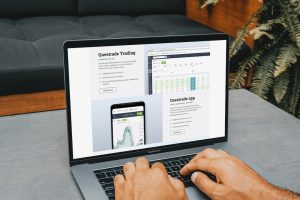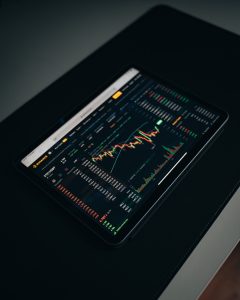Forex trading has become a massive industry in recent years. The forex market is the largest and most liquid financial market globally, with a daily trading volume of over $6.6 trillion. It is also a market that is accessible to everyone, from individual traders to institutional traders.
Institutional traders, also known as large traders, trade forex on behalf of institutions like banks, hedge funds, and pension funds. These traders have access to vast resources, including advanced trading platforms, sophisticated analytical tools, and an extensive network of information sources. In this article, we will explore how institutional traders trade forex.
Trading Strategies
Institutional traders use various trading strategies to make profits from the forex market. One popular strategy is known as carry trade, where traders borrow money in a low-interest-rate currency and invest in a currency with a high-interest rate. This strategy allows traders to profit from the interest rate differential between the two currencies.
Another strategy used by institutional traders is trend following. This strategy involves identifying a market trend and riding it until it reverses. Institutional traders use technical analysis and fundamental analysis to identify trends and make trading decisions.
Institutional traders also use algorithmic trading, which involves using computer programs to execute trades based on pre-determined rules. These algorithms can analyze vast amounts of data in real-time and make trading decisions faster than humans.
Trading Platforms
Institutional traders use advanced trading platforms that offer sophisticated tools and features. These platforms are designed to handle large trading volumes and provide institutional traders with real-time market data, news, and analysis.
One popular trading platform used by institutional traders is the Bloomberg Terminal. The Bloomberg Terminal offers real-time market data, news, and analysis, as well as advanced charting tools and customizable trading algorithms.
Other popular trading platforms used by institutional traders include Reuters Eikon, TradingView, and MetaTrader 4.
Risk Management
Institutional traders also pay close attention to risk management. They use various risk management techniques to protect their investments and minimize losses. One popular risk management technique used by institutional traders is stop-loss orders. These orders allow traders to set a predetermined price at which a trade will be automatically closed if the market moves against them.
Institutional traders also use position sizing to manage risk. Position sizing involves determining the amount of money to risk on each trade based on the trader’s risk tolerance and the size of their trading account. This helps institutional traders to limit their exposure to losses and protect their capital.
Information Sources
Institutional traders have access to an extensive network of information sources. They use various sources of information to make informed trading decisions. These sources include economic indicators, news releases, and market data.
Institutional traders also use research reports and analysis from investment banks and other financial institutions. They also have access to proprietary trading strategies and market intelligence, which gives them an edge in the market.
Conclusion
Institutional traders trade forex using advanced trading platforms, sophisticated analytical tools, and an extensive network of information sources. They use various trading strategies, including carry trade, trend following, and algorithmic trading, to make profits from the forex market. Institutional traders also pay close attention to risk management and use various techniques to protect their investments and minimize losses. Overall, institutional traders play a critical role in the forex market, and their trading activities can have a significant impact on currency prices.






